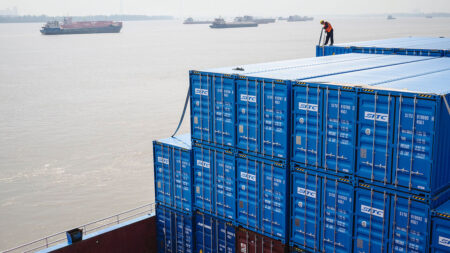In the past year, the trade landscape faced several shifts as many nations began to introduce new tariffs aimed primarily at steel imports. This movement was primarily a reaction to the influx of cheap steel from China, which was accused by numerous countries of inundating international markets with low-cost metal. The situation highlighted the growing discontent among global leaders who were increasingly concerned about the economic implications of such a flood. Sentiments ran high as countries sought to protect their domestic industries, leading to a collective call for tightening regulations on steel imports.
On February 9th, 2018, in a pivotal moment, former President Donald Trump adopted a distinctive strategy that diverged from the more targeted approaches of other nations. Instead of focusing solely on China as the primary culprit, Trump opted for a broader stance, reminiscent of a scattergun’s wide dispersal rather than a sniper’s precision. As he traveled en route to the Super Bowl in New Orleans, he made a significant announcement aboard Air Force One. To the astonishment of industry stakeholders and international observers alike, he declared that the United States would impose new tariffs of 25% on all aluminum and steel imports.
On February 10th, the anticipated tariffs were officially enacted, marking a critical juncture in American trade policy. The consequences of this announcement rippled through various sectors of the economy. Industries directly reliant on steel and aluminum faced immediate repercussions. For manufacturers, especially those like automotive and machinery producers that incorporate significant amounts of these metals in their products, the new tariffs raised the costs of raw materials. This was particularly concerning for companies that operated on thin profit margins, as rising input costs threatened profitability.
The broader implications of these tariffs were also felt internationally. The move sparked concerns among trade partners and allies alike, prompting discussions about the potential for a trade war. Nations that were affected by Trump’s tariffs voiced their dissent, indicating their willingness to respond with retaliatory measures. This created an atmosphere of uncertainty within global markets as countries started to reassess their trade relationships with the United States. Diplomatic tensions began to surface as discussions around free trade agreements and international cooperation became increasingly complicated.
Moreover, the logistics of implementing such broad tariffs raised questions about the regulatory framework needed to manage compliance and enforcement. The U.S. trade department faced the daunting task of monitoring imports and ensuring that foreign producers adhered to the new regulations. The complexities of international trade meant that categorizing and evaluating the origin of steel and aluminum imports was no small feat. Furthermore, industries reliant on these materials had to navigate a new landscape of compliance and cost management, leading to increased operational challenges.
In the wake of these developments, economists and analysts began to voice their opinions regarding the long-term effects of the tariffs. While some argued that the tariffs might protect domestic industries in the short term, others warned of the potential for retaliatory tariffs that could harm American exports. The interconnectedness of global markets meant that isolated tariffs could have far-reaching effects, potentially damaging trade relations with key partners while also influencing global pricing dynamics.
Ultimately, the decision to impose tariffs on aluminum and steel imports stirred significant debate within both political and economic circles. It underscored the complexities of trade dynamics and set the stage for ongoing discussions about the future of trade policy, globalization, and national economic interests. With numerous stakeholders both domestically and internationally affected by these changes, the long-term ramifications of Trump’s tariff initiatives remain an important area of observation within the evolving narrative of global trade. The unfolding story of these tariffs reveals the intricate balances of protecting local industries while maintaining cooperative relationships in an increasingly globalized world.









